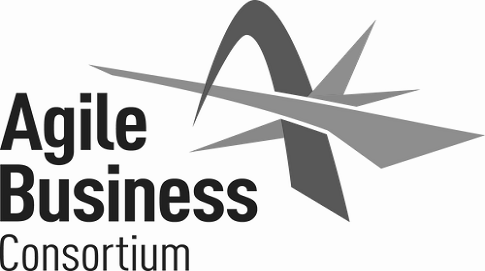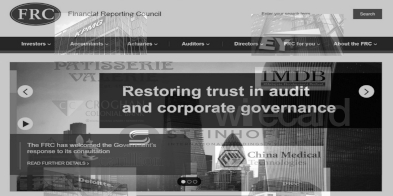Traditional project management methods utilised a waterfall approach whereby the end result was the objective, with all activities, planning and budgeting targeting this final delivery of the specified product/service.
By contrast, Dynamic Systems Development Method (DSDM) was originally labelled as a Rapid Application Development approach. With DSDM Agile, there is a building of prototypes whose future is to be then be evolved into a delivered solution.
Why then would an Agile approach be better suited to data governance and compliance than a more classic project approach – or is it?
The Challenge
Dynamic environments require dynamic approaches to managing the variables within that environment. Data acquisition, processing and extrapolation has undoubtedly been an incredibly dynamic environment for organizations globally over the past 2-3 years.
Meeting the needs of business operations in the face of major competitors out-resourcing your company through better use of data is but one such challenge. Use of big data, distributed ledger, new entrants with lower barriers to entry, cloud migration, data volumes have shifted at an increasing rate. A few global players act as gatekeepers in many instances now.
How then, to keep up or find a product or service and the means of creating and distributing it with sufficient margin to validate a business case in this maelstrom of change?
The Solution
Traditional approaches focus upon business goals and in meeting business objectives. It takes a strategic perspective and considers risks, is there a sufficient business case to proceed, and then imposes a structure in delivering on those components in a final form.
The classical approach requires planning the structure of a project: budget, timescale, work required, resources etc., considering everything at every level of the project. It adds a temporal component, from the short-term, such as what activities are to be executed when and what teams will undertake at specific times, to the long-term, over the course of the project itself.
It can be argued that a classic approach is safer for a company to use as its project and program methodologies, since the account for risk. There are plans for what should happen, but the approach also considers what may happen and plans for it by considering risks, how they can be dealt with and how they can be prevented or minimised.
By contrast, DSDM Agile does not impose a project structure, instead it is a way to think about how the work that goes into the project should be organised and performed, with the work being iterative and incremental, focussing on customer requirements and the product.
DSDM Agile has a product as opposed to a strategy focus and makes a key assumption that the product (or service as a product) will have a worth to the business if it is delivered in the correct manner. With DSDM Agile, the ultimate goal is in ensuring that the product meets the client needs, with the work executed in the most efficient manner possible.
Rather than having a final product as the deliverable and planning how to deliver that final product, in DSDM Agile the product is delivered incrementally, where features are added to the product on a piecemeal basis by incorporating feedback, until all customer requirements are met. In this way, the product at the commencement of the project will not be the final one delivered.
Most people have cases in mind when they think of a project or plan that changed fundamentally from first idea or thought, to what happened on the journey to the end. It is the same in dynamic environments, with constantly shifting client expectations, consumption habits, levels of margin that shift dramatically due to technology.
It is for these reasons that adopting a DSDM Agile approach to projects and programs is most suitable in the present and most likely, future operating environment. Communication with the stakeholders is emphasised over documentation or following a rigid structure. With less planning, adaptability is increased. Where predictability is low, DSDM Agile’s responsive approach can make the difference between delivering a competitive product or service, or one mismatched with customer expectations.
Traditional project management methods utilised a waterfall approach whereby the end result was the objective, with all activities, planning and budgeting targeting this final delivery of the specified product/service.
By contrast, Dynamic Systems Development Method (DSDM) was originally labelled as a Rapid Application Development approach. With DSDM Agile, there is a building of prototypes whose future is to be then be evolved into a delivered solution.
Why then would an Agile approach be better suited to data governance and compliance than a more classic project approach – or is it?
The Challenge
Dynamic environments require dynamic approaches to managing the variables within that environment. Data acquisition, processing and extrapolation has undoubtedly been an incredibly dynamic environment for organizations globally over the past 2-3 years.
Meeting the needs of business operations in the face of major competitors out-resourcing your company through better use of data is but one such challenge. Use of big data, distributed ledger, new entrants with lower barriers to entry, cloud migration, data volumes have shifted at an increasing rate. A few global players act as gatekeepers in many instances now.
How then, to keep up or find a product or service and the means of creating and distributing it with sufficient margin to validate a business case in this maelstrom of change?
The Solution
Traditional approaches focus upon business goals and in meeting business objectives. It takes a strategic perspective and considers risks, is there a sufficient business case to proceed, and then imposes a structure in delivering on those components in a final form.
The classical approach requires planning the structure of a project: budget, timescale, work required, resources etc., considering everything at every level of the project. It adds a temporal component, from the short-term, such as what activities are to be executed when and what teams will undertake at specific times, to the long-term, over the course of the project itself.
It can be argued that a classic approach is safer for a company to use as its project and program methodologies, since the account for risk. There are plans for what should happen, but the approach also considers what may happen and plans for it by considering risks, how they can be dealt with and how they can be prevented or minimised.
By contrast, DSDM Agile does not impose a project structure, instead it is a way to think about how the work that goes into the project should be organised and performed, with the work being iterative and incremental, focussing on customer requirements and the product.
DSDM Agile has a product as opposed to a strategy focus and makes a key assumption that the product (or service as a product) will have a worth to the business if it is delivered in the correct manner. With DSDM Agile, the ultimate goal is in ensuring that the product meets the client needs, with the work executed in the most efficient manner possible.
Rather than having a final product as the deliverable and planning how to deliver that final product, in DSDM Agile the product is delivered incrementally, where features are added to the product on a piecemeal basis by incorporating feedback, until all customer requirements are met. In this way, the product at the commencement of the project will not be the final one delivered.
Most people have cases in mind when they think of a project or plan that changed fundamentally from first idea or thought, to what happened on the journey to the end. It is the same in dynamic environments, with constantly shifting client expectations, consumption habits, levels of margin that shift dramatically due to technology.
It is for these reasons that adopting a DSDM Agile approach to projects and programs is most suitable in the present and most likely, future operating environment. Communication with the stakeholders is emphasised over documentation or following a rigid structure. With less planning, adaptability is increased. Where predictability is low, DSDM Agile’s responsive approach can make the difference between delivering a competitive product or service, or one mismatched with customer expectations.
Traditional project management methods utilised a waterfall approach whereby the end result was the objective, with all activities, planning and budgeting targeting this final delivery of the specified product/service.
By contrast, Dynamic Systems Development Method (DSDM) was originally labelled as a Rapid Application Development approach. With DSDM Agile, there is a building of prototypes whose future is to be then be evolved into a delivered solution.
Why then would an Agile approach be better suited to data governance and compliance than a more classic project approach – or is it?
The Challenge
Dynamic environments require dynamic approaches to managing the variables within that environment. Data acquisition, processing and extrapolation has undoubtedly been an incredibly dynamic environment for organizations globally over the past 2-3 years.
Meeting the needs of business operations in the face of major competitors out-resourcing your company through better use of data is but one such challenge. Use of big data, distributed ledger, new entrants with lower barriers to entry, cloud migration, data volumes have shifted at an increasing rate. A few global players act as gatekeepers in many instances now.
How then, to keep up or find a product or service and the means of creating and distributing it with sufficient margin to validate a business case in this maelstrom of change?
The Solution
Traditional approaches focus upon business goals and in meeting business objectives. It takes a strategic perspective and considers risks, is there a sufficient business case to proceed, and then imposes a structure in delivering on those components in a final form.
The classical approach requires planning the structure of a project: budget, timescale, work required, resources etc., considering everything at every level of the project. It adds a temporal component, from the short-term, such as what activities are to be executed when and what teams will undertake at specific times, to the long-term, over the course of the project itself.
It can be argued that a classic approach is safer for a company to use as its project and program methodologies, since the account for risk. There are plans for what should happen, but the approach also considers what may happen and plans for it by considering risks, how they can be dealt with and how they can be prevented or minimised.
By contrast, DSDM Agile does not impose a project structure, instead it is a way to think about how the work that goes into the project should be organised and performed, with the work being iterative and incremental, focussing on customer requirements and the product.
DSDM Agile has a product as opposed to a strategy focus and makes a key assumption that the product (or service as a product) will have a worth to the business if it is delivered in the correct manner. With DSDM Agile, the ultimate goal is in ensuring that the product meets the client needs, with the work executed in the most efficient manner possible.
Rather than having a final product as the deliverable and planning how to deliver that final product, in DSDM Agile the product is delivered incrementally, where features are added to the product on a piecemeal basis by incorporating feedback, until all customer requirements are met. In this way, the product at the commencement of the project will not be the final one delivered.
Most people have cases in mind when they think of a project or plan that changed fundamentally from first idea or thought, to what happened on the journey to the end. It is the same in dynamic environments, with constantly shifting client expectations, consumption habits, levels of margin that shift dramatically due to technology.
It is for these reasons that adopting a DSDM Agile approach to projects and programs is most suitable in the present and most likely, future operating environment. Communication with the stakeholders is emphasised over documentation or following a rigid structure. With less planning, adaptability is increased. Where predictability is low, DSDM Agile’s responsive approach can make the difference between delivering a competitive product or service, or one mismatched with customer expectations.
It is for these reasons that adopting a DSDM Agile approach to projects and programs is most suitable in the present and most likely, future operating environment. Communication with the stakeholders is emphasised over documentation or following a rigid structure. With less planning, adaptability is increased. Where predictability is low, DSDM Agile’s responsive approach can make the difference between delivering a competitive product or service, or one mismatched with customer expectations.





